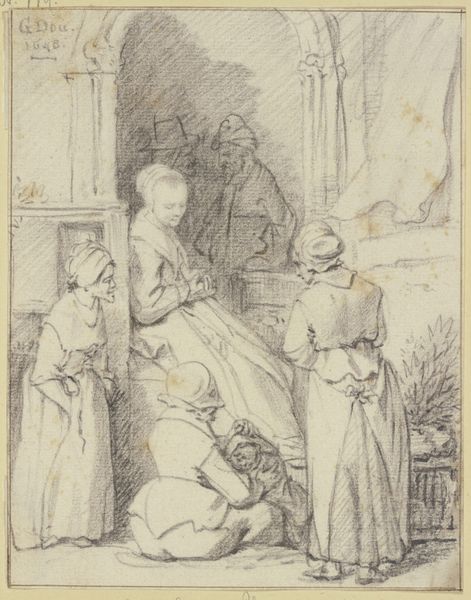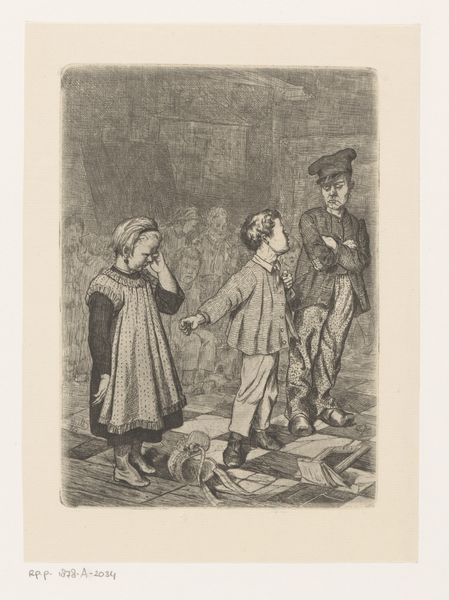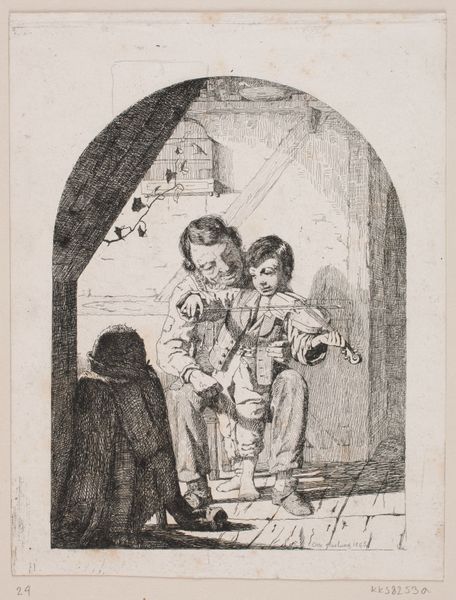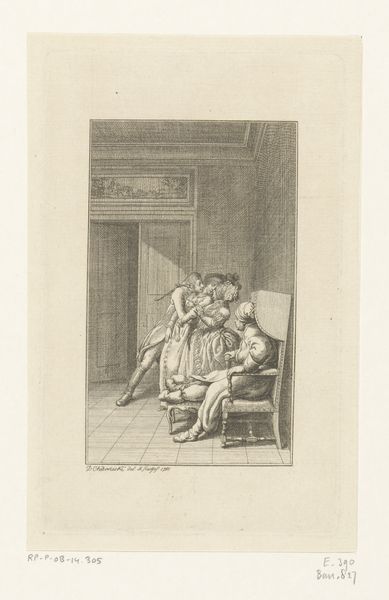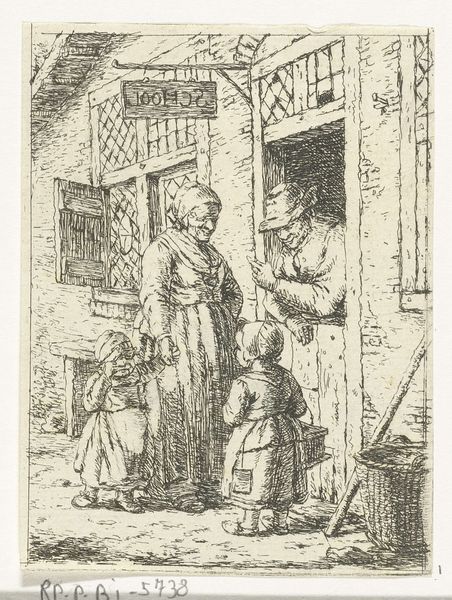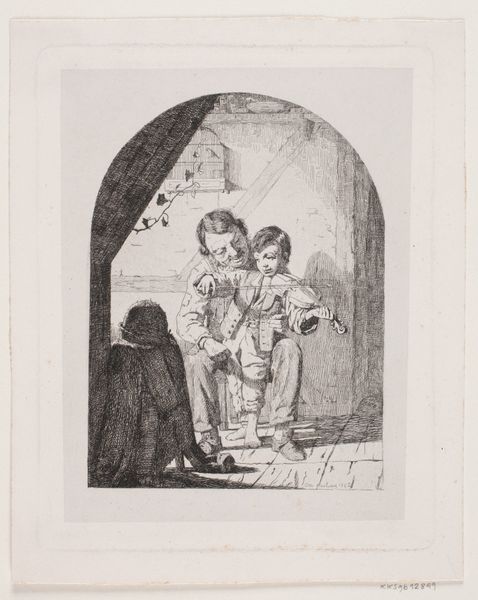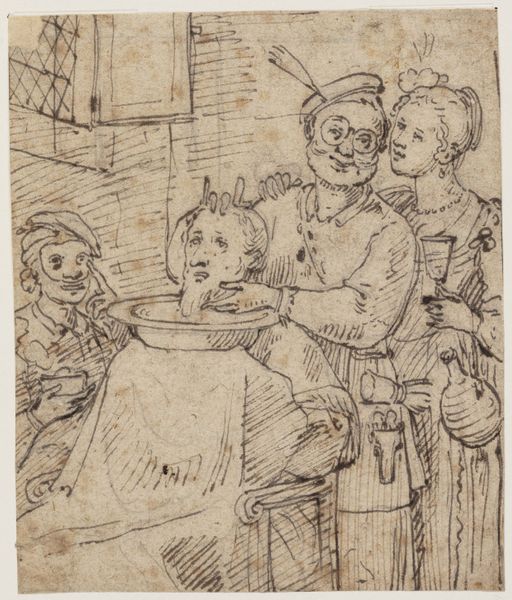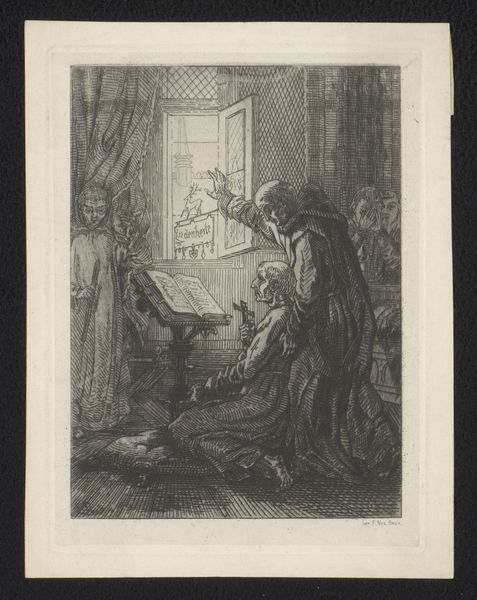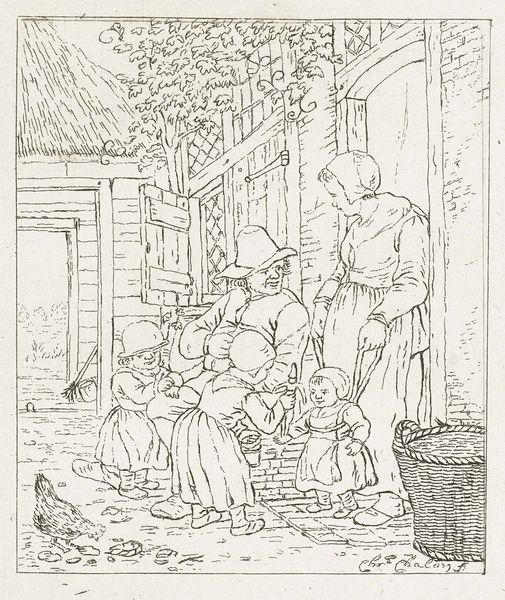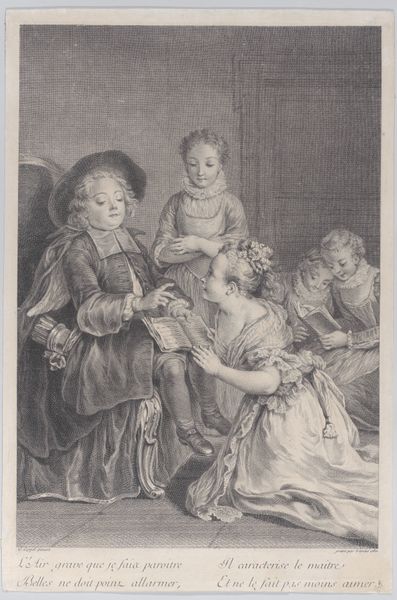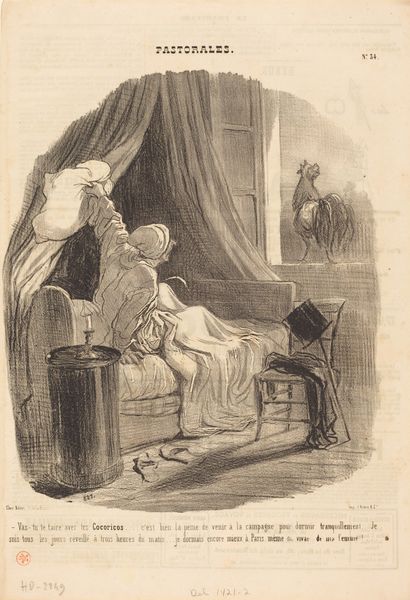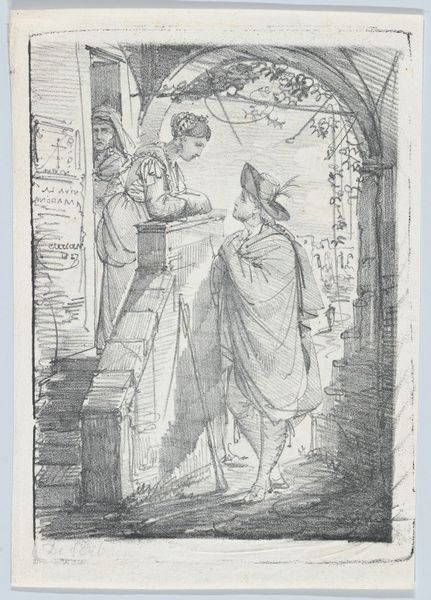
drawing, print, paper, pencil, graphite
#
portrait
#
drawing
#
narrative-art
# print
#
pencil sketch
#
paper
#
pencil
#
graphite
#
genre-painting
Dimensions: 301 × 232 mm
Copyright: Public Domain
Curator: Welcome. Today we're looking at "The Unlucky Attempt," a drawing of unknown date by Thomas Parr currently in the collection of The Art Institute of Chicago. Editor: My immediate reaction is a feeling of muted domestic drama, caught in graphite tones. The slight paper grain gives the whole scene a sense of age and immediacy. Curator: Indeed. It appears to depict a scene with three figures: a woman observing from a doorway, another supporting a man who looks unwell, perhaps intoxicated. The "unlucky attempt" title gives us a key, suggesting the woman may be trying to help, or even revive, him. What cultural narrative can you find embedded here? Editor: Well, let’s not skip over the physical details. It's a drawing and print, presumably multiplied for broader distribution, democratizing what might have been a scene viewed solely by a select wealthy elite in, say, an oil painting. This accessibility alone shifts its meaning. And given the probable date – judging by the costumes – the materials speak volumes. Pencil, paper… inexpensive, easily sourced, widely available for printed editions. Curator: That’s very true. Symbolically, the woman at the door represents a liminal figure. She is poised between private and public spaces, suggesting judgement, disapproval or a secret keeping. Is she about to enter or about to run away? Also note the detail of the objects, like bottles, at the right corner of the image that imply of excessiveness. The setting itself contributes to the meaning. Editor: I agree that the objects can mean different things for us. But to go back to that doorway - consider that printmaking involves physical labor; someone engraved the image, prepared the plates, and made impressions, thinking that someone else will acquire this object in order to show off at the public exhibitions and discussions around artwork happened constantly in that period. These materials carry their own history of labor and consumption that cannot be ignored. Curator: I can see how important you consider the means by which things are made. It adds to our picture for sure. Considering both, I find a blend of social critique and moral storytelling at play here. The expressions, composition, and the drawing technique evoke this tension of class disparity. Editor: It certainly adds layers, doesn’t it? It makes you ponder who this artwork was created for, and what the role of the artist in the grand scheme of things was. Curator: Thank you. That material perspective offers us such useful nuance.
Comments
No comments
Be the first to comment and join the conversation on the ultimate creative platform.
